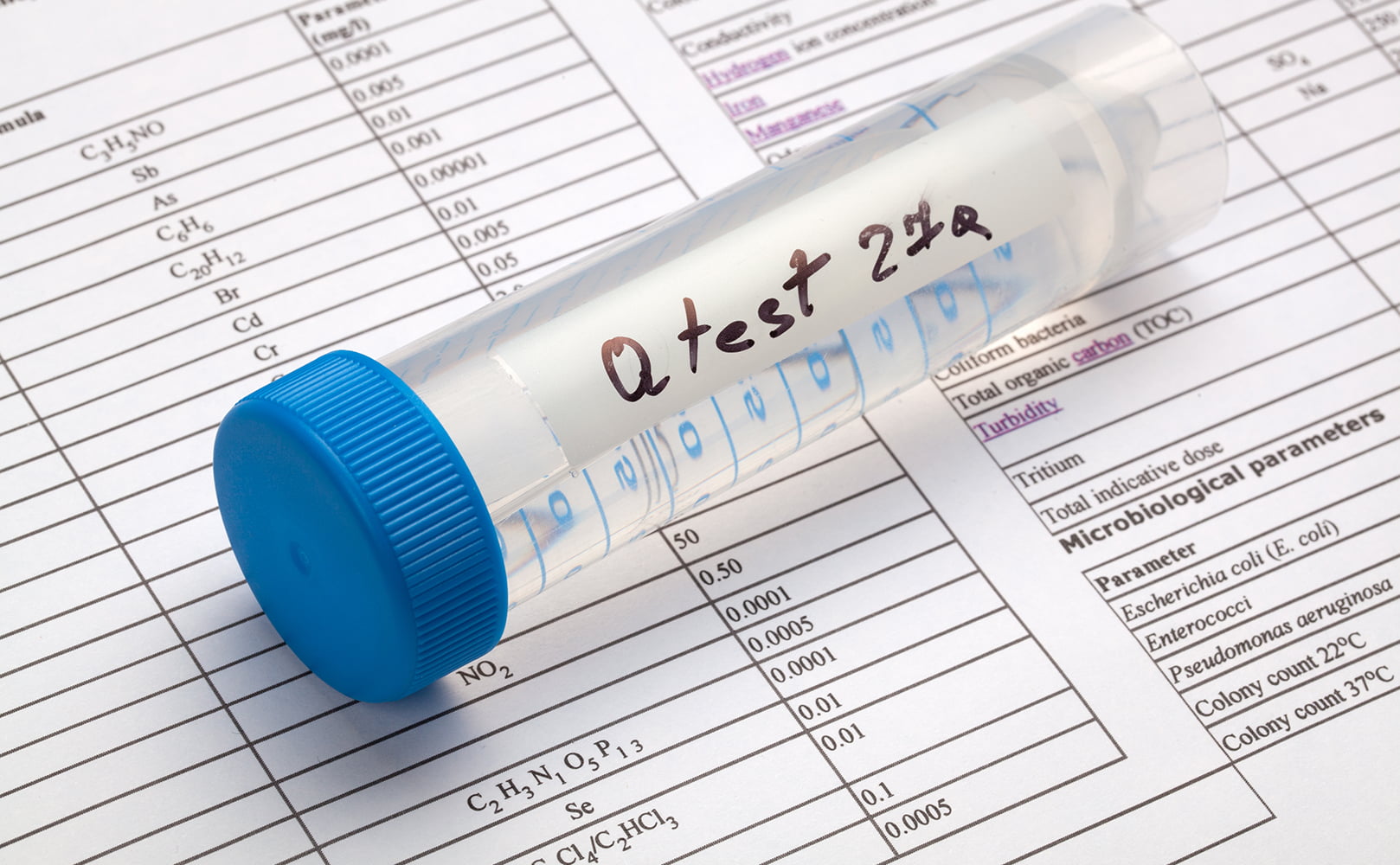Reverse Osmosis Water Smells Like Sulfur (Rotten Eggs)? Do This!
Written by: Gene Fitzgerald // Last Updated: Aug 8, 2023
This page may contain affiliate links. If you buy a product or service through such a link we earn a commission at no extra cost to you. Learn more.
One of the absolute worst smells coming out of your RO faucet has to be the rotten egg smell. When it happens, it really causes your nose to screw up!
Hydrogen sulfide (H2S) is usually responsible for this unpleasant sulfur or rotten-egg odor in reverse osmosis water.
But where does the H2S come from, how can you get rid of it, and is it dangerous? Let’s see.
Key Takeaways
- Hydrogen sulfide in water creates a sulfur, or rotten egg smell. It can get into your feed water in various ways and is not usually due to issues with your RO system itself. However, the problem is that reverse osmosis is not good at removing hydrogen sulfide.
- Hydrogen sulfide should be treated depending on the location of the sulfide production.
Why Your Reverse Osmosis Water Smells Like Sulfur (Rotten Eggs)
There are a few sources of sulfur smell that can sneak into your reverse osmosis water.
- H2S can occur naturally as a byproduct of decay and chemical reactions between soil and rocks. This natural occurrence happens when organic matter decomposes, releasing H2S gas into the surrounding water, which eventually ends up in your RO water.
- Manmade pollution can also contribute to the presence of hydrogen sulfide in water, though it is relatively rare.
- Hydrogen sulfide can also be produced by sulfur bacteria which may occur in your plumbing system or your well. Sulfur bacteria can produce H2S as part of their metabolic processes. These bacteria thrive in environments with low oxygen levels, such as marshes, swamps, or stagnant water bodies. When these bacteria interact with sulfate compounds present in the water, they release H2S gas, causing the characteristic odor.
- And finally, your water heater may be the culprit…
Problems with Your Water Heater
Hydrogen sulfide can be generated due to a chemical reaction occurring inside water heaters. When water with high levels of sulfates enters a water heater, the heat prompts a reaction that converts sulfates into H2S gas. This gas can dissolve in the hot water, resulting in an unpleasant smell when dispensed from faucets or showers.
Sulfur bacteria can also simply grow in water heaters and produce hydrogen sulfide.
Your Well, Plumbing System, or Water Softener
What’s more, sulfur bacteria can thrive in wells, plumbing systems, or water softeners.
Regular monitoring, proper disinfection, and maintenance can help prevent their growth.
Hydrogen Sulfide in the Source Water
Hydrogen sulfide may occur naturally in your source water. But again, this is rare. It’s more likely that the water contains sulfur bacteria.
Does Reverse Osmosis Not Remove Sulfur Odor from Water?
“But I thought reverse osmosis removes any bad smell, including sulfur?!”
Sulfur has different chemical forms, which is the deciding factor on whether or not reverse osmosis can eliminate it. Sulfite or sulfate can be removed by reverse osmosis membranes, but hydrogen sulfide, a dissolved gas, cannot. This gas has tiny molecules that easily pass through the RO membrane.
However, pre or post-filtration steps in a reverse osmosis system, such as activated carbon filters, can help address odor issues caused by hydrogen sulfide.
How to Get Rid of Sulfur Smell in Reverse Osmosis Water
To get rid of the sulfur smell in your RO water, you need to identify the source of the problem. To do this, smell the water from your hot and cold water faucets after being away from home for a few hours.
- The issue is likely in the water heater if there is no smell from the cold water faucet.
- If there is no smell from the faucets not connected to the water softener, then the problem is probably sulfur bacteria in the water softener.
- If the smell is also coming from the faucets not connected to the water softener, it could be from the well, plumbing system, or groundwater. To determine which, let your water run for a few minutes. If the smell dissipates, it is probably your well or plumbing system. If it does not, it is perhaps your groundwater.
Once you have determined the issue, here is how to fix it.
Water Heater
Consult a professional unless you are familiar with water heater operation and maintenance. Options include replacing or removing the magnesium anode, disinfecting and flushing the water heater with a chlorine bleach solution, or increasing the water heater temperature to 160 degrees Fahrenheit for several hours.
Well, Plumbing System, or Water Softener
Disinfect the well and plumbing system with a strong chlorine solution. If sulfur bacteria are present, additional pre-filtration may be necessary. Contact the manufacturer for disinfection instructions if the bacteria are in the water softener or other treatment devices.
Groundwater
Consider installing additional home water treatment or drilling a new well in a different location.
Activated carbon filters are only effective for less than 1 ppm of hydrogen sulfide. For levels, both below and above 1 ppm, consider options like oxidizing media filtration, aeration and filtration, continuous chlorination and filtration, or ozonation and filtration.
Sulfur Bacteria in the RO System Itself
While it is not likely, it is still possible for sulfur bacteria to develop in your RO system. If you suspect this, one solution could be sanitizing the system with bleach and replacing all filter elements to assess if it resolves the issue. Here is how to do this:
- Ready a bucket of warm dishwater, a scrubbing tool, and 3 tablespoons of a non-scented sanitizer.
- Shut off the water supply and detach any connected appliances like ice makers.
- Open the water dispenser and drain it.
- Remove all pre-filters and the RO membrane.
- Clean the interior of the filter housings with dishwater, then rinse.
- Pour the sanitizer into the first stage housing.
- Ensure only the post-filter is installed, then turn on the water supply.
- Open the RO faucet until water comes out, then close it.
- Fill the tank and let the sanitizer sit for 30 minutes to a few hours.
- Flush the system.
- Refill and flush the tank again until no sanitizer scent remains. Repeat as many times as necessary.
- Turn off the water supply and open the RO faucet.
- Install the new filters. Check the rubber O-rings for tightness.
- Reconnect the water supply.
- Open the RO faucet for a few minutes for system flushing.
- Close the faucet to fill the tank.
- Dispose of 1-2 full tanks of water before use as per your system’s instructions.
How to Treat Hydrogen Sulfide in Water
Step 1: Have Your Water Tested
To determine the presence of actual H2S in your water supply, it is necessary to conduct an in-home test. Since hydrogen sulfide is a gas, it cannot be sent to a laboratory for analysis, as it will probably dissipate before reaching the lab.
The treatment options available for H2S in source water will depend on its concentration and the presence of other contaminants in your water supply.
Step 2: Choosing the Right Treatment Method
There are three main options for treating H2S in your water supply.
Pre-Oxidation (Greensand, Aeration, Ozone, Chlorine, etc.) Followed By Mechanical Filtration
Pre-oxidation combined with mechanical filtration offers a dependable and economical method to remove sulfur from water. By exposing hydrogen sulfide to oxygen, the sulfur separates and “solidifies”, allowing for filtration through carbon and other filters. Hydrogen peroxide is an inexpensive and efficient oxidizer, or aeration or an oxidizing filter can be utilized.
Anion Exchange
When sulfur oxidizes, it transforms into sulfuric acid, with sulfate and sulfite ions easily eliminated through anion exchange.
Activated/Catalytic Carbon
While activated carbon can effectively eliminate some hydrogen sulfide, it cannot entirely eradicate it. Activated carbon can only remove hydrogen sulfide when its concentration remains below 0.3 ppm. Using activated carbon will prove ineffective if the sulfide content exceeds this threshold in your drinking water.
What Is Sulfur? What Is Hydrogen Sulfide?
Sulfur is the 5th most abundant element on Earth, occurs naturally in sulfide and sulfate forms and is widely present in our surroundings. It’s used for fertilizer, fungicide, and pesticide production, in the pharmaceutical industry, and as a food preservative.
Hydrogen sulfide gas is another variant with a distinct rotten egg odor. Industries like oil refineries, gas refineries, paper processing, and mining employ it, while natural sources include sewers, well water, and manure pits.
Is RO Water with Sulfur Smell Safe to Drink?
At low levels, sulfur is not deemed hazardous. Although it may not have an appealing smell or taste, consuming even a minute quantity that creates a rotten egg odor is still safe. The presence of as little as 0.5 ppm in water can result in a noticeable odor.
Safe Levels of Sulfur in Water
The Environmental Protection Agency (EPA) does not establish a specific maximum contaminant level for hydrogen sulfide in drinking water.
If you have any questions about reverse osmosis sulfur smell please don’t hesitate to leave a comment below!
Information provided on BOS is for educational purposes only. The products and services we review may not be right for your individual circumstances.
We adhere to strict editorial guidelines. Rest assured, the opinions expressed have not been provided, reviewed, or otherwise endorsed by our partners – they are unbiased, independent, and the author’s alone. We fact-check all content for accuracy. It is accurate as of the date posted and to the best of our knowledge.



